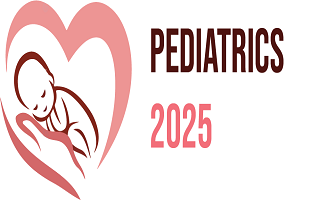3rd International Conference on
Pediatrics & Neonatology
November 27-28, 2025 | Online
Pediatrics 2025

Revive Relive Llc, USA
Abstract:
Objective:
To summarize the prognosis of children who develop bloodstream infections (BSIs) after congenital heart disease (CHD) surgery, and to investigate whether there is an association between cumulative corticosteroid exposure and the BSIs in pediatric CHD.
Methods:
A retrospective analysis was conducted on the clinical data patients who underwent CHD surgery at the Department of Cardiovascular Surgery, Children’s Hospital of Fudan University, from November 1, 2015, to December 31, 2024. Among these, 59 patients who developed BSIs after admission to the cardiac care unit (CCU) were included in the infection group. Using gender, age at surgery, weight, and RACHS-1 surgical risk category as baseline factors, 59 matched controls were selected. The prognosis of children with BSIs was summarized, and paired logistic regression analysis was performed to assess the relationship between corticosteroid exposure and BSIs.
Results:
Among the 59 children with postoperative bloodstream infections, there were 33 males and 26 females, with a mean age of 1.67 ± 3.30 years and a mean weight of 8.40 ± 9.65 kg. Pathogens identified included 15 cases of Gram-negative bacteria, 32 cases of Gram-positive bacteria, and 12 cases of fungi. The median time from surgery to BSI diagnosis was 8 days (IQR: 5–16.5 days). Among these, 17 patients (28.8%) developed acute kidney injury (AKI), 7 (11.9%) developed acute liver injury (ALI), 1 required blood purification, and 19 died. In the control group of 59 patients, 3 (5.1%) developed AKI, and none had ALI. Compared with the control group, the infection group had a significantly higher median cardiopulmonary bypass (CPB) time (96 [66.8, 135.8] vs. 82 [52, 108], p < 0.001), higher median peak direct bilirubin (10 [6, 16.9] vs. 8 [4.9, 9.85], p = 0.048), significantly more cases of AKI and ALI (p < 0.001), longer median duration of postoperative mechanical ventilation (192 [94, 420] vs. 48 [24, 120], p < 0.01), longer median CCU stay (18 [8.5, 39] vs. 6 [3, 12], p < 0.001), and longer median hospitalization duration (43 [22.5, 66.75] vs. 24 [16, 34], p < 0.001). Regarding corticosteroid exposure, 91.5% of the infection group underwent CPB, during which methylprednisolone was used in all cases. Postoperatively, 39.0% received methylprednisolone for 1–17 days, and 52.5% received dexamethasone. In the control group, 91.5% also underwent CPB with methylprednisolone use, 37.29% received postoperative methylprednisolone, and 42.4% received dexamethasone. There were no significant differences between the two groups in terms of cumulative doses of methylprednisolone or dexamethasone, or in the number of days of corticosteroid exposure. Logistic regression analysis showed no statistically significant differences in methylprednisolone cumulative dose (odds ratio [OR] 1.01 [95% CI 0.99–1.02], p = 0.60), dexamethasone cumulative dose (OR 2.41 [95% CI 0.01–525], p = 0.75), or days of corticosteroid exposure (OR 1.11 [95% CI 0.96–1.28], p = 0.15).
Conclusion:
Children who develop bloodstream infections after congenital heart surgery are at higher risk of liver and kidney injury, and experience longer durations of mechanical ventilation, CCU stay, and overall hospitalization. However, routine use of corticosteroids does not appear to increase the risk of postoperative bloodstream infections.
Biography:
I am a licensed Physical Therapist in the U.S. (Texas) and a Registered Physiotherapist in Canada, with a Doctor of Physical Therapy from Northeastern University and a Master’s in Exercise Physiology from Wichita State University. My experience spans home health, skilled nursing, and outpatient settings, specializing in rehabilitation for geriatric patients and individuals with complex medical conditions such as stroke, Parkinson’s disease, dementia, and joint replacements. I also have sports clinic experience in Canada, treating athletes and active individuals. Passionate about patient-centered care, I combine clinical expertise with empathy and currently serve as a Study Buddy Mentor, helping future Physical Therapists prepare for the NPTE.
